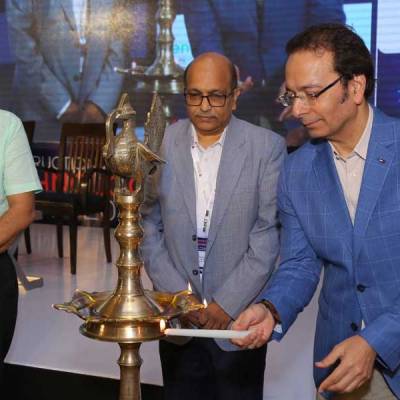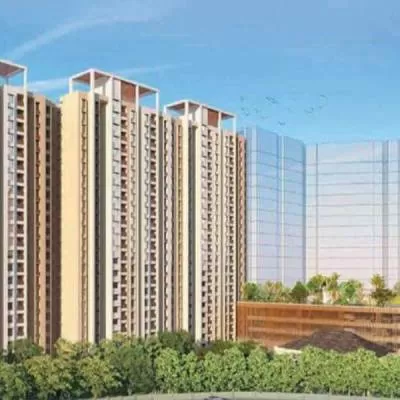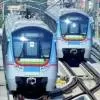- Home
- Real Estate
- NEW-AGE TECHNOLOGY!
NEW-AGE TECHNOLOGY!
Read full article
CW Gold Benefits
- Weekly Industry Updates
- Industry Feature Stories
- Premium Newsletter Access
- Building Material Prices (weekly) + trends/analysis
- Best Stories from our sister publications - Indian Cement Review, Equipment India, Infrastructure Today
- Sector focused Research Reports
- Sector Wise Updates (infrastructure, cement, equipment & construction) + trend analysis
- Exclusive text & video interviews
- Digital Delivery
- Financial Data for publically listed companies + Analysis
- Preconceptual Projects in the pipeline PAN India
- Kalyan Vaidyanathan
- Ravi Mundoli
- Kalyan Vaidyanathan
- Ravi Mundoli
- Embassy Group
- FalconBrick Technologies
- Sashi Kiran
- Real estate
- SAP system
- Shapoorji Pallonji Engineering & Construction
- SC Dixit
- Internet of Things
- BIM
- Unmanned Aerial Vehicles
- JLL IDEA
- Technology
- 3D modelling
- JLL India
- Velprakash K
- digitisation
- Construction technology
- CW
Construction technology start-ups are introducing innovations that can put an end to the issue of time and cost overruns and the constant increase in labour and material costs. CW reports how!The year 2019 was a breakthrough year in terms of digitisation of the Indian construction industry. The industry witnessed a push and utilisation of cutting-edge software technology for real estate, industrial as well as infrastructure projects. “Every construction company today is convinced that technology is the way forward,” says Velprakash K, Executive Director & Sector Head- PDS, JLL India. “From cloud-based collaboration to robots and artificial intelligence – an incredible array of developments is helping improve the way buildings and infrastructure development happens in India.” Cloud-based collaboration, adoption of 3D modelling and BIM are making a significant shift towards constructible models, industrial robots. “These tools along with IoT will help construction companies connect, collaborate and be a real time data driven sector,” says Velprakash. He is confident that the year 2020 will continue witnessing similar trends. Coming in of technology start-upsIt is interesting to see how the industry has transformed from site based and non-desktop jobs to being technology driven. “At JLL,” Velprakash says, “...we believe these start-ups should be given the right support and push required to transform this industry with more advanced technologies. JLL IDEAs is India’s biggest real estate proptech accelerator that promotes start-ups working on cutting edge, disruptive technologies and solutions impacting developers, investors and occupier clients in the country.” The programme aims to create India’s biggest platform for convergence of technology in real estate sector. As an earlier JLL report underlines, it would be possible for construction stakeholders to optimise and automate the construction process and make faster project delivery possible. They could ensure that fewer resources will be required for the smooth development and completion of the building process.Some of the ways in which start-ups are establishing their presence in this field have been indicated in the below graph.Upcoming trendsBuilding Information Modelling (BIM), cloud and mobile technology, drones or Unmanned Aerial Vehicles (UAVs), Virtual Reality (VR), and artificial intelligence and robotics are some of the technology construction companies will be bound to adopt going forward. Velprakash K elaborates: Cloud-based collaboration: Effective communication is a prerequisite for the successful execution of any project, more so for complex real estate projects that involve large number of people in the project ecosystem. With cloud based collaborations, the hope for future is bigger. Shift towards constructible models: The adoption of 3D modeling and BIM in construction is a key driver of digitalisation. Professionals have realised that paper drawings, even in a BIM model, are not always accurate or reliable enough for actual construction. The only solution is to make these digital models constructible; which is exactly what constructible BIM, the next generation of BIM, delivers.Robots on construction sites: Unmanned Aerial Vehicles (UAVs), commonly known as drones, are often used in global construction projects nowadays. Use of drones have rendered surveying of large construction sites at a much easier and quicker pace today when compared to the several days or weeks it used to take in the past. The accuracy and precision of drones will only increase, necessitating even lesser human involvement.Internet of Things (IoT): Believed to be a key element of smart city infrastructure, sensors connected to the Internet can continually monitor and manage in real-time critical urban resources such as water, sewage, and electric systems. In construction, IoT is commonly used for monitoring machines on the site floor and for tracking the work progress. Mixed reality is making its mark globally, and sensors mounted on construction equipment or hard hats worn by construction professionals’ help firms significantly boost workforce safety on construction sites.Offsite-construction: Modular construction is gradually becoming a popular choice in the sector given the serious skills shortage and the continuously increasing material costs. It’s an alternative approach to the way we design, plan and build in the sector.Big Data and AI: Strong innovations range from automating the material ordering and delivery process to creating visual tours in future structures and promoting the use of self-driven vehicles on site. As the data collection and tracking practices improve, these type of technologies are expected to develop even further in the near future.The Tech-Revolution!Several new technologies have been making inroads in India. SC Dixit, Executive Director, Shapoorji Pallonji Engineering & Construction, elaborates:With the introduction of Internet of Things (IoT), an engineer can review the project progress real time on his mobile phone. Nowadays, we are also able to conduct satellite surveying of the entire contour, and access details of what is happening at the ground level. With the use of drones, we are not only able to conduct surveys, but capture activities on-site from a 360o perspective 24/7. The industry is now growing further on robotics. We are experimenting through robots on our site by using robotic block work for the walls. This activity does not involve labour – through the robotic process, blocks are lifted and the wall is created. From productivity point of view, this is a significant move. We need to look at creating a drywall system so that it is faster, factory-made and requires minimal labour. Further, there is a SAP system, which integrates the entire system from financing to process control to procurement to delivery to store inventory. RFIDs are now being tagged on to materials. We can also tag RFID to the labours to monitor them on site. So productivity can be measured. 3D printing is going to be the future. At Shapoorji Pallonji, we are at the early stages of adopting this technology. Beyond BIM what is being spoken about now is virtual reality (VR). You could walk through the entire project in advance, analyse the product and minimise mistakes.CW connected with select technology start-up firms for an overview of the current need and their new-age offering to the building and construction sectors. MOBILE-APP BASED CONSTRUCTION MANAGEMENT SOLUTIONTThe construction and real estate sector in India is a $150 billion industry and is set to grow seven times by 2028 (almost to $1 trillion)!Unfortunately, the industry has been plagued with huge issues such as project delays and cost overruns. On an average, projects are delayed by18 months, and almost 80 per cent projects exceed budgets. According to a recent study, in the last four years, only 15 per cent of the companies have handed over their projects on time to the end consumers. The key reason: Low productivity, ancient working techniques and slow or no technology adoption.Existing technologies do not address the issues on the ground. Also, the top management of builders have limited visibility on project delays, resulting in increased costs and low customer satisfaction.Backed with a unique blend of industry and tech experience, three industry experts – Gautam Mayur, Aditya Shankar and Sashi Kiran – came together to solve the above issues with the use of digital technology and the power of mobile. This led to the development of FalconBrick Technologies. The aim was to digitise construction operations in a way that it helps accelerate projects and allows much earlier handover to customers.And today, FalconBrick has come up with one of India’s first end-to-end, mobile-based construction management solutions for real estate builders and construction companies. “The mobile app helps builders accelerate their projects and reduce delays by up to 20 per cent, saving costs by up to 15 per cent and providing much superior quality to the end consumers by reducing delays, improving efficiency and bringing in transparency and accountability,” says Sashi Kiran, Founder & Director, FalconBrick Technologies.Kiran informs that the solution brings all teams involved in any construction project onto a common platform with two primary components:A workflow solution on an easy-to-use mobile app: This is used by engineers and even contractors to track the project’s progress at a detailed level (flat-wise/activity-wise) and monitor site activities, contractor tasks and inspection checklists from their own mobile phones.A powerful package of real-time data analytics and live dashboards: This provides real-time information to senior management on the project’s progress, predicts delays and helps builders benchmark projects, contractors and employees.The mobile app is completely customisable and addresses every stage of a project life-cycle, as Kiran mentions, “from the start till handover to the customers.”This includes: “Excavation and civil structures, entire finishing of apartments and commercial structures, inspections and handover to end-customers, and post possession and facilities management.”FalconBrick TechnologiesYear of establishment: 2016Growth graph: Grown to multiple cities, more than 60 leading customers and about 100 projects.Reach: Bengaluru, Mumbai, Pune, Delhi-NCR, Kolkata, Hyderabad and ChennaiClientele: Embassy Group, Aparna Builders, JLL, L&T Realty, Brigade Group, K Raheja, Salarpuria Sattva, Dosti Realty, Rohan Builders, M3M Group and PS Group.Aim: To go live at about 1,000 projects pan-India across the top 10-15 metros as well as Tier-II and Tier-III cities, and also tap international markets. INTEGRATED PROJECT CONTROLS SOLUTIONAlso, over the years, the construction industry has not leveraged technology to an extent where it could function smoothly, especially when compared with its counterparts such as manufacturing and retail. Accomplishing consistent coordination and communication over the project life-cycle was viewed as a serious challenge. And, only a true disruptive innovation and a technology paragon could fix this.Nadhi Information Technologies was born out of the understanding that construction projects involve intra and inter-organisation collaboration and coordination among several stakeholders through the design, procure, and the construct phases. As co-founders, Kalyan Vaidyanathan and Ravi Mundoli come from a civil engineering background. They brought together their passion for “brick and mortar” with “click and order” and created nPulseTM – a cutting-edge full-fledged enterprise solution for integrated project planning and controls that is capable of transforming project planning and execution to a whole new level.Today, Nadhi develops and delivers nPulse™, an integrated project controls solution that allows mobile data collection, integrated project information analysis and real-time decision support for over 250 capital projects in 19 countries. “The nPulse™ platform enables the owner/developer, consultants, and contractors involved in a project to collaborate on the go,” says Kalyan Vaidyanathan, Co-Founder and CEO, Nadhi Information Technologies. He adds, “The idea is to grant visibility of site conditions without actually visiting the site (especially by senior management) and to reduce and automate most of the manual planning and forecasting tasks performed by planners and project managers.”Ravi Mundoli, Co-founder and CTO, Nadhi Information Technologies, shares, “As it is a mobile-first SaaS based platform, data is collected through mobiles from site engineers and supervisors present at the site and further analysed.” He adds, “Project heads can then use these data driven analytics in critical decision-making, well before an issue mushrooms into a crisis.”This product is widely used in residential and commercial real estate, roads, railways, power plant, solar, bridges, marine facilities, and power transmission. It is more than a collaboration hub, and as Vaidyanathan and Mundoli share, its features include:Automating key processes and workflows to reduce the manual burden on project staff and KPIs are delivered to decision-makers real time.Data collection at the “last mile” on-sites is easier via mobile apps and QR code.Bi-directional integration with ERP and scheduling systems so that more value can be extracted from investment in those technologies, further increasing the digital footprint of the organisation.Physical and financial progress can be tracked synchronously and early warnings can be provided on potential deviation from budget and schedule baselines.Generating lead indicators on project and reducing the domino effects of time and cost overruns.Seamless collaboration across different areas of the project such as schedule management, cost/revenue management, document management, issue management, quality control, snag list management, checklists and claims processes.Integrating with BIM enables the site progress data and analytics to “flow” into the BIM model at the click of a button for visualisation in near real time.Nadhi Information TechnologiesYear of establishment: First production release – about five years back. Growth graph: Develop a diversified portfolio of around 250 projects.Reach: Daily use by over 2,000 users in 19 countries around South Asia, the Middle East, Southeast Asia and AfricaApplication: Highways, railways, bridges, oil and gas, power, solar, power transmission and distribution, and commercial and residential real estate.Clientele: RMZ, Lodha Builders, Kalpataru Developers, Tata Realty, Godrej Construction, Morgan Advanced Materials, L&T, Afcons and Shapoorji Pallonji.OPTIMISING OPERATIONS WITH DATA-DRIVEN EFFICIENCIESThe future of the construction and real estate industries will rely heavily on being able to use data-driven efficiencies to optimise their operations.However, digital tools within the industry had been either limited in scope or inflexible. Virtually, no one had tried to empower truly integrated and real time systems. Here, Facilio has a vision: To introduce the same responsive service provision that users have become accustomed to in the B2C space from business models such as those of Uber and AirBnB. Essentially, the idea was to offer the industry a simple to use but powerful digital tool. And, data was the means to achieve this. From the outset, Facilio’s vision was to achieve optimal outcomes for all stakeholders, from commercial real estate owners and facilities managers to building occupants. The industry’s assets was constantly generating huge amount of data but it was not being put to use. This is where the company wanted to cater to – be it delightful customer experiences, optimal energy efficiencies, and reduce cost of operations or unprecedented sustainability. Facilio is one of the only IoT-driven data platforms for multi-site building operations and maintenance that harnesses IoT and AI to centrally consolidate existing building systems and automation data across an entire portfolio, onto the cloud. As Prabhu Ramachandran, CEO and Co-Founder, Facilio, says, “It offers applications and modules for property owners and service providers to manage and control portfolio-wide O&M activities and outcomes, such as maintenance, tenant experience and sustainability, in real-time.”There is a huge scope for the deployment of technology driven models in the fabrication and maintenance of buildings. “Not only does such a digitally empowered model result in unprecedented efficiencies, it can redefine the cost versus revenue profile of current business models. Be it within the complex web of workforce teams and assets deployed in construction, or the many embedded automated systems in the average modern building, a lot of operational data being generated is currently lying unused,” says Ramachandran. He goes on to inform that Facilio’s technology agnostic platform is able to extract this dormant resource and create value for the business, by turning such data into actionable insights. “With the complete transparency of operations that the solution makes possible, the industry can finally make truly informed and data-derived decisions.”FacilioYear of establishment: 2017Funding: The company has raised two rounds of funding so far. Raised its seed funding from Accel Partner, and their Series A funding from Tiger Global and Accel. Growth graph: Active across the US, India, Middle East, Brazil and Singapore. Expanded into the territories of Dubai and New York in 2019.Clientele: Wasl Properties and Al Fajer facilities management in the Middle East. MoU with Digital X, a subsidiary of DEWA, to deliver Smart Living as a Service (SLaaS), as part of the ambitious Dubai 10X initiative. DRONE DATA-BASED SOLUTIONSThe complex nature of construction projects result in a lack of near real-time data and this is why delays and overruns happen at the ground level. Different stakeholders focus on varied aspects of a single construction site. While the engineers focus on aggregate and volumes, the management looks into the overall time and cost overruns.Skylark Drones builds and delivers drone data-based solutions that streamline planning, reduce overheads in contractor management and increase oversight of operations for the construction sector across sites in different verticals and geographies. Mughilan Thiru Ramasamy and Mrinal Pai were college mates and had pursued their engineering in Bengaluru. Aerospace was a shared passion. They realised that the inherent advantages that drones and drone data bring can be leveraged with the right technology to solve prescient real world challenges. They established Skylark Drones for enterprises to plan, build, and sustain assets by reducing operational costs, saving time, and increasing revenue.Mrinal Pai, Co-Founder, Skylark Drones, says, “What we do is recreate construction sites near-real time and analyse the geospatial twin with AI driven intelligence for engineering information and management insights across every stage of construction.”At the pre-construction stage, Pai adds, “Drone solutions serve to understand the topography in terms of land usage and ownership to streamline planning. During construction, these provide an accessible way for project managers to understand the quantum and quality of work delivered by vendors and contractors on a day-to-day basis. And, post construction, drones play a major role in the area of defect and anomaly detection.” Drone solutions are driven by high-density data points that are about five times as accurate as satellite data.Drones and drone data help cut down the time spent in every phase of the data to decision process. The other aspect is reach. Pai shares, “One can understand the area of interest faster and give the engineers a bird’s-eye view of what is happening across the entire site.” Similarly, a manger can monitor not just one but multiple sites in tandem.Skylark DronesYear of Establishment: 2014Clientele: Tata Steel, BOSCH, L&T, UltraTech, Syngenta, CleanMax Energy, Vedanta, Shapoorji Pallonji and Alstom.OFFSITE MANUFACTURINGOver the last decade, the country has witnessed increasing migration, especially among millennials, to urban areas for better career prospects. This has led to increased pressure on the existing infrastructure and real estate development and an urgent need for smarter, better, and sustainable buildings. The Indian construction industry, with its conventional construction methods, has been struggling with delays in project completion due to lack of industrial and technological advancement, procedural, permission constraints, and delayed processes. There is a dire need to transform the industry to meet the massive demand for residential and commercial buildings by introducing technology-driven models for construction, and this has led Katerra to the Indian construction sector. Katerra develops design and technology-driven solutions that help reduce delivery time up to 50 per cent, thereby speeding up the construction process to deliver smarter and better commercial and residential spaces for its clients. With its factories in Krishnagiri, Hyderabad, and Lucknow (portable factory setup) in India, the company has the capacity to manufacture a 1.2 million sq ft building in less than 50 days through end-to-end building services.At Katerra, technology is used at all levels of building design and construction, bringing tested system approaches from global industries to ensure greater efficiency in building design and development. “We are using technology-led end-to-end solutions across the building delivery cycle – right from design to procurement and offsite manufacturing to onsite installation and ultimately, delivery of the building,” says Nejeeb Khan, Head, Design & Business Strategy in India, Katerra.” Our technology-driven component design and productivised building solutions are Designed for Manufacturing and Assembly (DfMA), which enables our clients to benefit from speed and cost optimisation while still having a unique building design.” The company’s automated assembly-line production, along with factory-built components including bathroom, rooms, double walls, beams, hollow-core slabs, among others, are built offsite at a factory set-up with mechanical, electrical, plumbing work, finishes, and fittings. And as Khan informs, “Finished components are then delivered onsite just-in-time using pre-determined software simulated schedules and assembled onsite. This integrated technology approach helps us deliver projects faster, efficiently, and more sustainably.” Katerra’s factories act as an extension of job sites, providing greater precision, higher productivity, and enhanced quality control. “The company has also developed a host of curated, high-quality building products in HVAC, lighting, bath pods, building materials, and finishes,” informs Khan. “It has been suppliers of a global chain on curated, high-quality building products, and provides full-fledged building products to every sector, including residential – single and multi-family homes; commercial office buildings; hotels; malls; hospitals; schools; and industrial parks.”KaterraYear of establishment: Founded in 2015 by Michael MarksGrowth graph: Today, Katerra has more than 700 projects in progress and six factories across the globe.Headquartered: Silicon ValleyReach:Operational offices across North America, India, China, and the Middle EastClientele: In India: Embassy Group, Bosch, and Infosys in Bengaluru; Lulu Mall, KMCH Hospitals, and GEMS Schools to deliver solutions for commercial and industrial buildings, hospitals, malls, and schools; recently broke ground for a new residential and office space project with Vaishnavi Group.INDUSTRIAL 3D PRINTINGIn India, there is a need for industrial 3D printing solutions. With all Indian start-ups focusing on consuming 3D printing, this technology is set to bring in the next revolution in the manufacturing process. Four years ago, four IIT Madras alumni came together to introduce the industrial 3D printing. This led to the formation of Tvasta Manufacturing Solutions, a technology-driven company that builds systems and applications for 3D Printing. “The company aims to enable Production of end products using 3D printing and is working towards making 3D printing a mainstream technology for Industries,” says Adithya VS, CEO, Tvasta Manufacturing Solutions.Tvasta sees itself as a platform and applications company. Adithya adds, “Tvasta leverages the 3D printing technology platforms to target specific applications in various industries, which can deliver high value to its customers.” He adds that the company has developed 3D printers capable of building large-scale structures in the area of construction 3D printing. An ongoing project in collaboration with a construction company and IIT Madras aims to 3D print toilet modules using 3D printing. The company is also building India’s first 3D printed house along with the habitat for humanity in IIT Madras.Tvasta Manufacturing SolutionsYear of establishment: 2016Growth graph: Moved from small scale printing to building the largest 3D printer in India. Growth has been quite steep with real improvements in offerings and technology year-on-year. Clientele: Largest construction companies in India, cement companies, and government organisations.AAC BLOCKSThe construction industry for the longest time used red clay bricks. The fundamental issue, however, is that it used red soil for mass production, which is the topmost layer of any produce. And, this key ingredient was an old technology and was contributing to soil erosion. And this led Darshan Kumar to establish Maxlite AAC Blocks. “I established Maxlite to replace the hazardous red clay bricks with AAC blocks. I really wanted to make an impact to our environment,” says Darshan Kumar, Founder and Managing Director, Maxlite AAC Blocks. He goes on to add that the primary advantage of AAC blocks is that the key ingredient for production is fly-ash. “Fly-ash is an industrial pollutant, hence recycling which would mean impacting the environment double-fold,” Kumar adds, further elaborating on other advantages it carries such as higher strength, lower cost, and energy-efficacy as compared to the standard red clay bricks.Kumar always wanted to make a difference in the business world. And he was passionate about establishing a business that is eco-friendly. “I feel responsible towards the environment and it is with that in mindset I initiated Maxlite, a source for profitable business and an eco-friendly one.”MaxliteYear of establishment: 2017Headquartered: BengaluruAchievement: Till date, recycled over 60,000 tonne of hazardous fly-ash pollutant to make the AAC blocks that have saved an approximate of 5,000 tonne of CO2 emissions.Clientele: Quality of the AAC blocks produced is a testament to the company’s 150+ stockists, 75+ premier projects and over 7,500 retail customers in India.ENERGY-EFFICIENCY AND SUSTAINABILITYEnergy-efficiency continues to be the top priority for any organisation in becoming more cost competitive in open market place and meeting the national objectives of enhanced energy-efficiency. Moreover, energy costs have increased at an alarming rate of 25-40 per cent in the last 10 years affecting the bottom-line of any organisation. As per a recent report, saving 30 per cent of your bottom-line in turn is equivalent to making 5 per cent more revenue. On top of that, the interest in environmental responsibility is at an all-time high. This prompted the formation of an organisation – Ecoprosus India – to integrate sustainability and guide the customers.An intuitive technology company, Ecoprosus delivers integrated energy-efficiency and sustainability across all sectors. “We work with customers on both sides of the meter to reduce OPEX, upgrade and maintain facilities, stabilise energy costs, increase energy reliability and enhance the environment,” says BR Anand, Co-Founder & CSO, Ecoprosus India. He adds, “We deliver sustainable growth to the new and running businesses by providing unique energy-efficiency and integrated enterprise sustainability solutions with minimal or no upfront capital investments.” The company provides a comprehensive, customisable, scalable platform that help cities and communities to proactively predict and solve social, economic and environmental problems. It focuses on IoT, artificial intelligence, machine learning and a deep understanding of wireless design and connectivity solutions. “We believe in,” Anand says, “→ Continuous innovation → Being responsive, reliable, and collaborative → Diverse thinking→ Open and transparent culture.Ecoprosus IndiaYear of establishment: 2017Growth graph: Currently, has a turnover of $2 million with a pipeline of clientele to reach $7 million by 2020-2021.Clientele: One of the key OEM for the BEL, Astrikos and Schneider to implement several smart city projects including Namchi, Gangtok, Belagavi, Tumkur and Goa; other clients include Goldplus, Ispat, Schneider, DS Group and Harman.Pioneered: Deployed smart lighting and smart poles for several projectsINTEGRATED WATER MANAGEMENT PLATFORMIndia is no stranger to the issue of water crises. In this scenario, five engineers – Vijay Krishna, Mohamed Mohideen, Abilash Haridass, Sundeep Donthamshetty and Selvakumar AB – established WEGoT with the aim to support the adoption of sustainable water use practices in buildings using technology. Growing up in Chennai and being witness to acute water shortages, these engineers wanted to contribute and help the city solve its water shortage. Having understood the power of Internet of Things (IoT), the group ventured to develop VenAqua, a sensor-based IoT device and a software platform that can be connected to water inlet pipes. WEGoT has created an integrated water management platform in real time, to address the current water crisis. “By tracking real time flow, the company’s sensor-based IoT device and VenAqua, helps in reducing the demand for water by more than 50 per cent,” says Abilash Haridass, Co-Founder and Chief of Growth & Strategy, WEGoT. Sensors are installed in buildings to track water usage and generate daily reports. These granular data collected from various installations are analysed and the insights are shared with the end-users on a mobile app. Haridass adds, “The software further tracks usage patterns, which helps the building owners understand the amount of water required to be stored in tanks. It also detects leakages, abnormal water usage and inefficient water infrastructure, and informs the users and facility managers in real-time.” As part of the process, people managing buildings become more accountable and decrease their consumption by making real-time decisions. Haridass informs that the solution is offered on subscription, wherein the company gives the product free and users pay nominal monthly fee of Rs.149 (Residential) or 20 paise per sq ft (Commercial), apart from installation charges. The solution has helped apartment communities, commercial buildings and factories save up to 50 per cent water consumed. WEGoTYear of establishment: 2015Reach: Spread across 15 cities and aims to expand to 10 cities in the next two quarters. Growth graph: Solutions deployed in 30,000 homes, 20 mn sq ft of commercial space resulting in a cumulative savings of 1 billion litre of water.Aim: To hit the target of saving 10 billion litre in the next two years.Business model: Stopped selling the product and gave it for free (installation charged on actuals) and charged a nominal monthly subscription fee. This helped acquire customers at a 4X pace.Clientele: Residential space: Brigade Group, Salarpuria Sattva, Mahindra, Aparna Constructions, Appaswamy Real Estates, Casa Grand Group and Ceebros; Commercial space: Godrej, ITC Group, Danfoss, Embassy, RMZ Group and Indian Institute of Human Settlements.- SHRIYAL SETHUMADHAVANKnow of a New Age Technology? Write in at feedback@ConstructionWorld.in




















